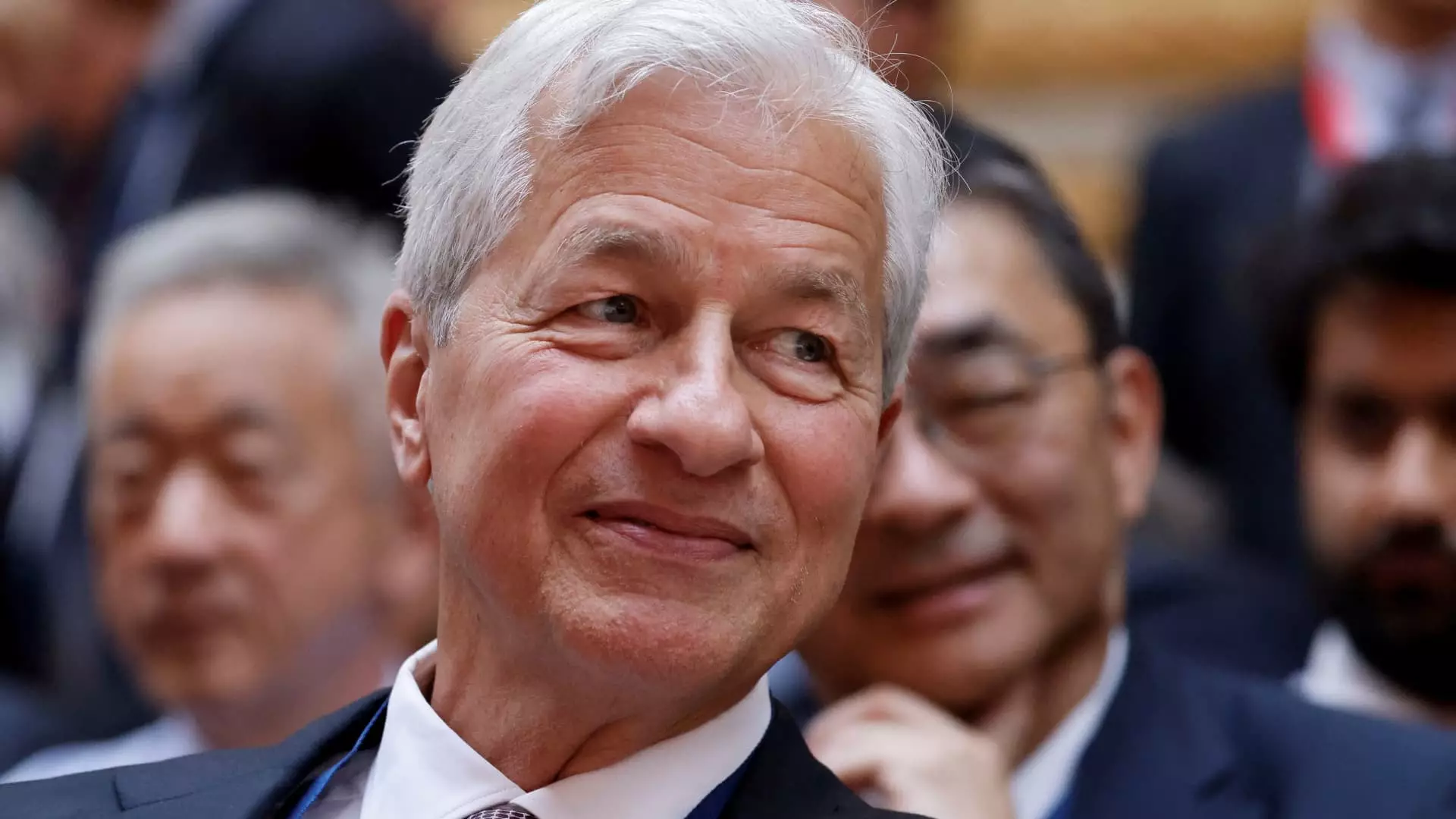The discourse surrounding tariffs in the United States has gained renewed vigor, particularly with the stance taken by President Donald Trump and echoed by prominent financial leaders like JPMorgan Chase’s CEO, Jamie Dimon. While tariffs have historically been a source of contention, Dimon’s recent comments highlight a nuanced perspective that sees potential economic benefits, especially regarding national interests. This article explores the multifaceted implications of tariffs on the U.S. economy, considering both the positive aspects and the associated risks.
In the contemporary economic landscape, tariffs have been painted in starkly black-and-white tones: they are either seen as a necessary protection for domestic industries or as a catalyst for global trade wars and inflation. Dimon’s assertions suggest a third perspective—that tariffs can serve a dual purpose if employed judiciously. He asserts that slight inflation, ostensibly a byproduct of tariffs, may be an acceptable trade-off for bolstering national security. This viewpoint underscores a critical analysis of tariffs as a strategic economic tool, rather than a blunt instrument that harms trade relationships indiscriminately.
Trump’s proposed implementation of up to 25% tariffs on goods from Canada and Mexico, alongside a 10% levy on Chinese imports, fundamentally reshapes trade dynamics. In light of an ongoing trade deficit, particularly with the European Union—a staggering $214 billion as of late 2024—these moves aim to recalibrate imbalances and compel foreign partners to negotiate terms more favorable to the U.S. The challenge lies in the fine line between leveraging tariffs to achieve favorable agreements and inadvertently provoking retaliation that could escalate into a trade war.
One of the most contentious issues surrounding tariffs is their effect on inflation. Dimon suggests that the link between tariffs and inflation is not as straightforward as it appears. Historical evidence indicates that while tariffs can drive prices up, the overall economic environment and consumer sentiment play pivotal roles in determining inflation levels. For instance, during Trump’s first term, inflation levels were notably kept below 2.5% annually despite the implementation of broad-based tariffs. This scenario raises questions about the broader economic context; perhaps a robust domestic economy can sustain tariffs without the corresponding spike in consumer prices.
Moreover, Dimon’s comments regarding the U.S. dollar’s trajectory vis-a-vis tariffs reflect a deeper understanding of the economy’s interconnectedness. A weakened dollar can enhance the competitiveness of American exports, offsetting some adverse effects of tariffs. Thus, while tariffs are traditionally viewed as inflationary, their actual impact can vary considerably depending on a multitude of external factors, from global economic conditions to shifts in domestic consumer behavior.
Dimon’s sentiments were not isolated; Goldman Sachs CEO David Solomon echoed similar thoughts during the World Economic Forum in Davos. He pointed out that the U.S. business community has been proactive in anticipating policy shifts, emphasizing that any potential rebalancing of trade agreements could ultimately be beneficial for U.S. growth—if handled appropriately. This perspective indicates a growing recognition among financial leaders that while the immediate effects of tariffs can be unsettling, the long-term implications may foster a more favorable trading environment.
However, the efficacy of such a strategy hinges on the execution of these tariffs and the diplomatic finesse employed in negotiations with trading partners. Failure to navigate these waters carefully could result in significant economic fallout, inadvertently harming the very interests these tariffs seek to protect.
As the U.S. forges ahead with its tariff strategy, balancing the immediate challenges with long-term economic growth will be crucial. While Dimon and Solomon express cautious optimism regarding the potential benefits of tariffs, the real test lies in their implementation. A well-structured tariff policy, aligned with broader economic goals, can serve as a catalyst for positive change in the global trading landscape. As the economic environment continues to evolve, stakeholders must remain vigilant and adaptable, ensuring that trade policies ultimately serve the nation’s best interests without jeopardizing its economic standing on the world stage.

